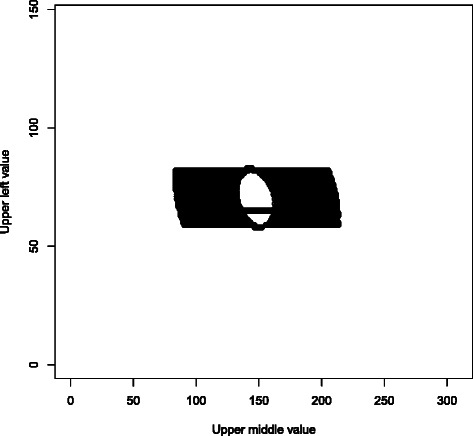Figure 2.

Computation pattern for our 2 × 3 Fisher’s exact test implementation. This is a plot of the set of alternative 2 × 3 contigency tables explicitly considered by our algorithm when testing the table with 65, 136, 324 in the top row and 81, 172, 314 in the bottom row. Letting ℓ denote the relative likelihood of observing the tested table under the null hypothesis, the set of tables with null hypothesis relative likelihoods between 2−53ℓ and ℓ has an ellipsoidal annulus shape, with area scaling as O(n) as the problem size increases; while the set of tables with relative likelihood greater than 2−53lmax (where lmax is the maximal single-table relative likelihood) has an elliptical shape, also with O(n) area. Summing the relative likelihoods in the first set, and then dividing that number by the sum of the relative likelihoods in the second set, yields the desired p-value to 10+ digit accuracy in O(n) time. In addition, we exploit the fact that a “row” of 2 × 3 table likelihoods sums to a single 2 × 2 table likelihood; this lets us essentially skip the top and bottom of the annulus, as well as all but a single row of the central ellipse.
